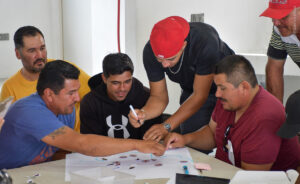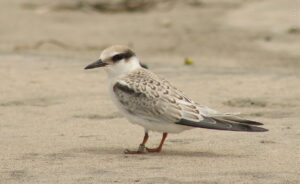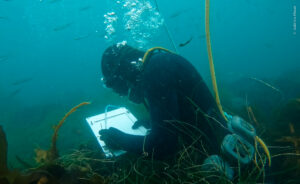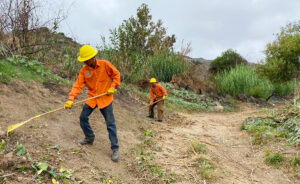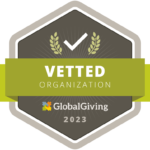The Marietas Islands is an archipelago of volcanic origin located only 9.5 kilometers from Punta Mita, Nayarit, and 36 kilometers from Puerto Vallarta, Jalisco. It is made up of 1,383 hectares of marine and coastal ecosystem, with two main islands ( Long Island and Round Island) and several islets that provide essential ecological goods and services for the northwest of Mexico.
Its remarkable biodiversity includes more than 90 bird species that find refuge, breeding and/or transit areas in the national park. Without a doubt, the Brown Bobo (Sula leucogaster), a bird of the gannet family, stands out thanks to the fact that it has its largest breeding colony in the Marietas Islands. On the other hand, the Flanged Tern (Onychoprion anaethetus) concentrates half of its world population in the archipelago. More than 40 species of flora and fauna are also identified in some category of risk, in addition to the Humpback Whale or Yubarta (Megaptera novaengliae) and the Olive Ridley Turtle or Olive Ridley (Lepidochelys olivacea).
Due to the proximity to the tourist ports of Puerto Vallarta, Jalisco, and Nueva Vallarta, Nayarit, the Marietas Islands are visited by 300,000 people every year, who enjoy this beautiful place with recreational activities such as scuba diving and snorkeling, boat rides and flora and fauna observation.
The popularity of the islands for tourism made it necessary to protect them from deterioration, resource exploitation, and pollution. In 2004, the archipelago was added to the RAMSAR List of Wetlands and Marine Ecosystems of Global Importance. A year later, in April 2005, the Mexican government granted the Marietas Islands the status of National Park. Finally, in 2007 the National Commission of Natural Protected Areas (CONANP) released the Islas Marietas National Park Management Program, a fundamental document for conservation of the entire area, in which we collaborated directly as Pronatura Noroeste.
Thanks to integral protection of the national park as a Natural Protected Area (NPA), there is a monitoring and financing scheme that works in an exemplary manner. This is largely thanks to the work we carry out with the tour operators of Puerto Vallarta and the Riviera Nayarit, through the alliance with the organization Bahia Unida. Our collaboration with the Paralelo 28 initiative to generate a system of economic funding from the tourism market is also relevant. This economic contribution is invested in environmental monitoring and management, to achieve a high level of compliance with the legal provisions that allow the conservation of the national park.
In addition, we maintain a constant activity in environmental training. In recent years we have carried out community impact activities, such as the publication of the educational guide “For a plastic-free sea” for elementary school teachers, in collaboration with Bahía Unida, the Marietas Islands and Isabel Island National Parks, and the Marismas Nacionales Biosphere Reserve. We also developed the workshop “A Wave of Change” for students, teachers and community members, in collaboration with the organization World Clean Up.
We have strengthened environmental awareness in communities in Ensenada, San Quintín, Villa de Jesus Maria and the Upper Gulf of California, as well as in the El Vizcaino Biosphere Reserve, the Loreto Bay National Park, the Marismas Nacionales Biosphere Reserve and the Babicora Lagoon in Chihuahua.
Collaborate with us in the conservation of this wonderful Mexican archipelago.



